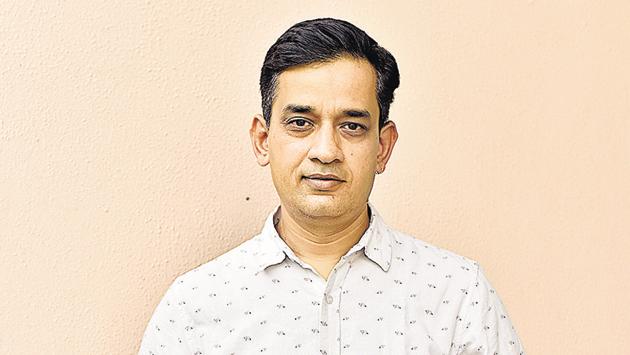Road design fundamentally wrong
Lack of drains alongside roads, massive tree felling to widen roads and unreliable infrastructure are the main reasons for the problem.
Yesterday morning, Millennium City’s infamous tag of ‘Gurujam’ was back again to haunt the residents as a few hours of downpour converted the so-called wide roads of the city into Olympic-size swimming pools. Sohna Road, NH8, MG Road and all other major and minor roads were filled with rainwater, with commuters having nowhere to go. Schools were shut as buses stood stranded in water. What started as a mild morning shower around 4am on Tuesday became nothing short of a disaster by 8am and with no electricity, even working from home was not an option for many. A research by the NITI Aayog suggested that 21 Indian cities are expected to run out of ground water by 2020. It is also an open secret that Gurugram is facing a huge water crisis and many parts of the city don’t even get the basic supply in summer. Therefore, what is a scarcity for Gurugram, i.e. water, once again turned into a calamity. Sudden downpours, like the one yesterday, are difficult to manage. But, the way Gurugram is being planned, especially the road network, is designed to fail.

There are three fundamental road design flaws that are creating chaos in rainy season:
Roads vs drains
The biggest culprit of ‘Gurujam’ is the fascination of cities’ engineers for building road with fewer drains. Most of the road network that we see in the city does not have stormwater drains and wherever these drains are present, they are blocked. The result is that even a few minutes of rain converts the roads into ponds. There is also a tendency to remove signalised intersections and replace them with flyovers or underpasses. Unfortunately in Gurugram, the construction of these structure comes at the cost of natural drainage. For example at Subash Chowk, Rajiv Chowk and Signature Tower, drainage was either never thought or was an afterthought and consequently they become massive choke points in the city. Some of the worst-hit areas yesterday were the ones around flyovers and underpasses.
Roads vs trees
The second unfortunate aspect of road planning in Gurugram is following the approach of wide roads. Wide roads come at a cost of massive tree cutting. Just a couple of days back it was reported that the National Highways Authority of India may cut nearly 10,000 fully grown trees on the Sohna Road to widen it. Incidentally, Sohna Road is already an 8-lane road with service roads in both directions. How many more lanes are needed to accommodate the traffic? None. Because it is seen from global examples that more roads, means more traffic. However, the mindless tree cutting, coupled with edge-to-edge bitumen decreases the porosity of the area which means water cannot seep into the ground. This creates havoc as drainage is anyway an issue.
Roads vs resilience
We may like it or not, but it is pretty evident that extreme weather events are becoming the norm. While climate change is a complex subject that is being debated and addressed at the international level, there are many similar issues that are crippling our cities when it comes to downpours and deluge. Therefore, it is important for cities for plan for resilient infrastructure and built a suitable environment. The question, therefore, is whether we have learnt anything from the past or from the July 26, 2016, when an unexpected 4.6cm rainfall brought the city to a standstill. The answer is a big NO. Therefore, is not surprising that the city has once again came to a standstill yesterday. It is important to realise that we are living in a world where the unexpected will happen and such situations, natural or manmade, will recur. But getting rainfall in the rainy season is expected, so the city should be ready on two counts—planning and preparation.
First, the planning should be such that it does not allow artificial flooding. Second, even if these incidences happen, the city should be thoroughly prepared. A lot can be done around the content of this preparedness i.e. right planning, right coordination and right execution, but we should also look at the process of this preparedness.
A big chunk of the problem can be solved if it rethinks its approach towards planning its roads. The city needs to accommodation drainage in its entire road network and no road project should be approved without proper drains. It also need to stop building highways inside the city, but instead look at dense network of streets with adequate footpaths and porous surfaces. Lastly, the city needs to plan for resilience in all its infrastructure.
Gurugram needs to rethink its approach towards road planning because ‘Gurujam’ may have been trending but it is surely not the tag the city can afford.
(Amit Bhatt is the director of integrated transport, WRI India)
@amitbhatt4u

Stay updated with all the Breaking News and Latest News from Mumbai. Click here for comprehensive coverage of top Cities including Bengaluru, Delhi, Hyderabad, and more across India along with Stay informed on the latest happenings in World News.
Stay updated with all the Breaking News and Latest News from Mumbai. Click here for comprehensive coverage of top Cities including Bengaluru, Delhi, Hyderabad, and more across India along with Stay informed on the latest happenings in World News.





